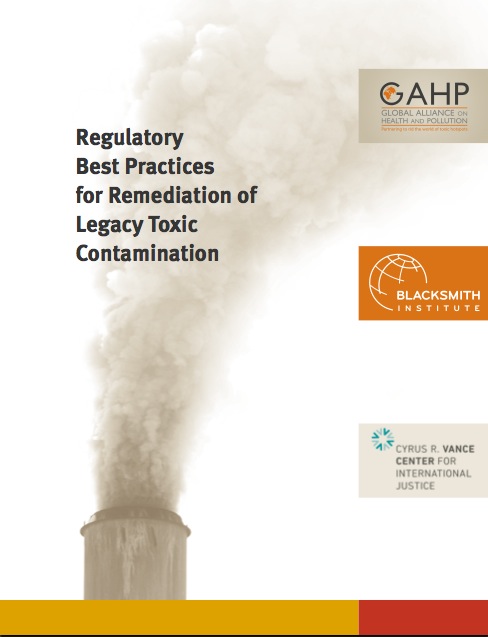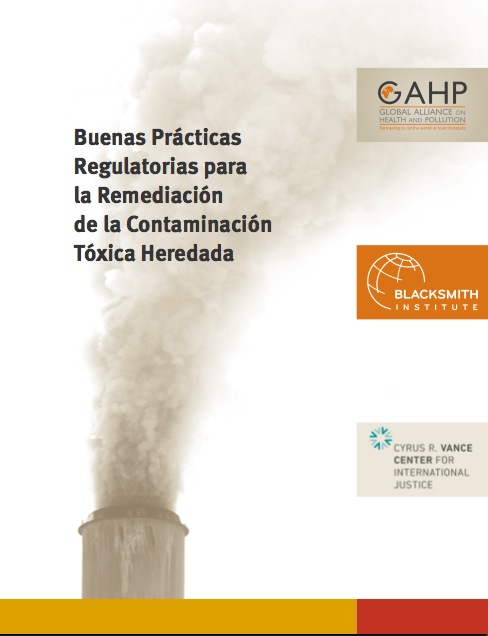 A new report provides a roadmap that can be used to accelerate pollution cleanup in Latin America. With input from experts from seven Latin American countries (Argentina, Brazil, Chile, Colombia, Mexico, Peru, Uruguay) and the U.S., the report examines environmental remediation laws and regulations that have proven to be particularly effective, and distills the findings into six governing principles that can be used as a model throughout Latin America for further refinement and discussion as environmental remediation laws are implemented, fine-tuned, and modified.
A new report provides a roadmap that can be used to accelerate pollution cleanup in Latin America. With input from experts from seven Latin American countries (Argentina, Brazil, Chile, Colombia, Mexico, Peru, Uruguay) and the U.S., the report examines environmental remediation laws and regulations that have proven to be particularly effective, and distills the findings into six governing principles that can be used as a model throughout Latin America for further refinement and discussion as environmental remediation laws are implemented, fine-tuned, and modified.
“In the U.S., the passage of what’s known as the Superfund program was what triggered cleanup. Even then, it took years of fine-tuning and modification to come up with best practices that worked. This report will help accelerate the process for Latin American countries. With effective regulations, cleanup of toxic pollution can happen faster, and more lives will be saved,” says Bret Ericson, Blacksmith’s Program Director for the Toxic Sites Identification Program.
The report is currently being made available to stakeholders across Latin America.
“The time is right for a report like this. Countries in Latin America are very eager to do something about toxic pollution. They all seem to be moving towards enacting or improving regulations related to the cleanup of contaminated sites,” notes Sandra Gualtero, Blacksmith’s Program Director for Latin America.
[Read more, download the report “Regulatory Best Practices for Remediation of Legacy Toxic Contamination,” or click the images on the right to download English and Spanish versions]
 The report was conducted by the Vance Center and commissioned by the Global Alliance on Health and Pollution (GAHP –a collaborative body supported by the World Bank, the Asian Development Bank, the European Commission, the UN and other agencies and countries). Blacksmith serves as Secretariat for the GAHP
The report was conducted by the Vance Center and commissioned by the Global Alliance on Health and Pollution (GAHP –a collaborative body supported by the World Bank, the Asian Development Bank, the European Commission, the UN and other agencies and countries). Blacksmith serves as Secretariat for the GAHP
The six governing principles are: (Read full descriptions of the six principals in the report at www.gahp.net)
1) Create clear numeric guidelines for establishing that a site is contaminated
Although contaminated sites are often defined as sites where pollution is present at levels that may present a threat to human health and the environment, it is useful to enact regulations that specifically define what those levels are, so that sites with contamination at or above those levels can be readily identified as candidates for further investigation and remediation, if necessary based on the risk of exposure of vulnerable populations.
2) Utilize commercial triggers to identify contaminated sites
Evaluation of historic contamination should be required when project proponents are applying for facility permits (or modifications to existing permits), when industrial facilities are being bought and sold, and when industrial facilities are being shut down. These commercial triggers will result in the identification of contaminated sites at a time when commercial activity is taking place and funding for investigation and remediation is most likely to be available.
3) Create incentives for voluntary remediation
Laws and regulations should encourage private parties to come forward on a voluntary basis to address legacy contamination on sites that they own and operate, or on sites that they are thinking about acquiring.
4) Create a clear and efficient remediation process
One of the most significant barriers to environmental cleanup is the uncertainty surrounding applicable cleanup standards, the complexity of the process, and the involvement of multiple governmental agencies with actually or potentially conflicting jurisdiction. Experience has shown that published cleanup standards, a simple process for engagement with the government, and clear delineations of which agency has jurisdiction over a particular cleanup will encourage increased private sector participation.
5) Provide meaningful opportunities for public review and comment
Environmental remediation regulations and practices often benefit from input from members of the business community who will be called upon to effectuate cleanups and also by members of the community who live in close proximity to contaminated sites. Site remediation plans may also be more pragmatic and tailored to actual risk if they are subject to prior public review and comment.
6) Develop effective mechanisms to address abandoned sites
Sites that are not subject to commercial activity or voluntary remediation can be the most troublesome from a governmental perspective. Governments should consider creating a registry of such sites so that they can be identified for investigation and evaluated as candidates for future remediation. Sites should be prioritized for cleanup based on a clear methodology established by the government to address those that pose the greatest risk first.





